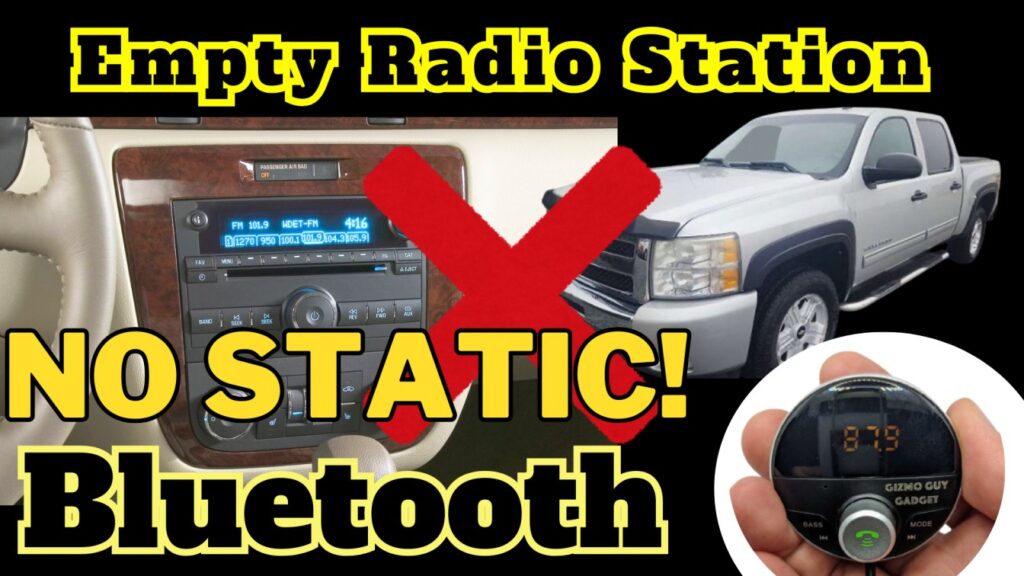The Ultimate Guide to Clear Car Audio

If your car is more than 15 years old, you might not have Bluetooth connectivity for audio streaming. The easiest solution for this is a Bluetooth FM transmitter Adapter. However, many cheap FM transmitters suffer from electronic interferences, resulting in ground loop noise, fuzzy static, and hissing sounds that can ruin your ride. This empty station for Bluetooth guide will help you find the unused FM frequency to fix static on your Bluetooth FM transmitter for your car audio, ensuring crystal-clear sound and an uninterrupted listening experience for your favorite music, podcasts, and audiobooks.
Amazon FM Transmitter Static Noise Example
Understanding FM Transmitter Frequencies
Before delving into specific frequencies, it’s important to understand FM transmitter frequencies and why they matter, and how to locate empty radio stations for Bluetooth FM Transmitter (Frequency Modulation) transmitters wirelessly transmit audio signals from your device, such as a smartphone or MP3 player, to your car’s radio. The FM frequency you choose determines the channel on which your audio will be broadcast.
Key Takeaway: Choosing the right FM frequency is crucial for achieving optimal sound quality.
Best Frequencies to Avoid Interference
One of the challenges of using FM transmitters is interference from existing radio stations. Interference can result in static, poor audio quality, or signal dropouts. To avoid interference and find empty radio stations for Bluetooth:
- Scan for Clear Frequencies: Use your car radio to scan for open frequencies. Look for channels without any active radio stations. These are the best starting points.
- Choose Empty Frequencies: Opt for frequencies with no or weak signals. Avoid frequencies near strong local stations.
- Retune When Traveling: Frequencies that work well in one location may not be suitable when you travel to different areas. Be prepared to retune your FM transmitter.
Key Takeaway: Identifying and avoiding interference is essential for clear and uninterrupted audio.
Finding the Best Frequencies Using Frequency Scanning Apps
To simplify the process of finding empty radio stations for Bluetooth, consider using smartphone apps designed for this purpose. These apps can scan your local area for available channels and provide recommendations. Some popular frequency scanning apps include:
- RadioDroid: A free and open-source app that scans for available FM frequencies.
- TuneLink Auto: Offers both FM frequency scanning and Bluetooth connectivity.
- ClearFM: A paid app with advanced scanning capabilities.
Using these apps can save you time and ensure you find the best available frequency for your location.
How to Find the Best Radio Channel for FM Transmitter to Bring new life to your classic or vintage car with the latest Bluetooth 5.0 technology! With Gizmo Guy Gadget, you can easily add Bluetooth capabilities and stream music, podcasts, audiobooks, and more from your phone through your older car’s original sound and Navigational system. No need to replace your head unit and sacrifice the integrity or resale value of your car, simply upgrade and modernize your sound and infotainment system without any modifications. https://www.gizmoguygadgets.com/shop/
- Bluetooth 5.0 is said to have several improvements, including stronger long-distance connections and easier pairing with other Bluetooth devices
Optimal FM Frequencies for Car Audio

These frequencies are often less crowded and can provide clearer audio. However, the best frequency for your location may vary, so don’t hesitate to explore nearby channels. You may consider the following optimal FM frequencies for car audio for no static fm frequency transmission:
- 87.9 MHz
- 88.3 MHz
- 88.7 MHz
- 89.1 MHz
- 89.5 MHz
Key Takeaway: Optimal FM frequencies provide better audio quality and a superior listening experience.
Testing and Adjusting Your FM Transmitter
To fine-tune your FM transmitter for the best audio quality, follow these steps:
- Select a Starting Frequency: Begin with one of the recommended optimal frequencies.
- Play Audio: Start playing your desired audio source (music, podcast, etc.).
- Adjust Frequency: Use your FM transmitter to fine-tune the frequency slightly up or down. Listen for the point where the audio sounds clearest and interference-free.
- Test While Driving: Test the selected frequency while driving, as signal strength can change on the road. Make further adjustments as needed for the best quality.
Tips for Eliminating Static on FM Transmitters
- 1. Optimize Antenna Placement Elevate and adjust your antenna for the best signal reception. Sometimes, a little height makes all the difference!
- 2. Invest in a High-Quality Antenna Upgrade to a high-gain or directional antenna. These babies are designed to snatch those FM signals right out of the air, reducing environmental interference.
- 3. Address Electrical Interference Find and move any electronic devices causing electromagnetic interference. Ferrite cores or shields on cables can also help clean up your signal.
- 4. Verify Equipment Integrity Regularly check your cables, connectors, and components. Replace any worn-out or faulty gear to keep your signal strong and static-free.
- 5. Select an Optimal Frequency Tune your FM transmitter to a frequency with minimal overlap from neighboring stations or devices. A clear frequency equals clear sound!
- 6. Minimize Multipath Propagation In the city? Position your antenna to reduce reflections and refractions from nearby structures. Less multipath interference means better sound quality.
- 7. Conduct a Site Survey Scout your area for interference sources like power lines or industrial equipment. Take steps to mitigate their impact on your FM transmission.
- 8. Implement Signal Boosters Boost your signal strength and clarity with amplifiers, especially in areas with weak reception or lots of obstacles.
- 9. Weatherproof the Antenna Setup Protect your antenna from the elements with weatherproof enclosures or coatings to ensure consistent signal reception.
- 10. Seek Professional Assistance Still dealing with static? Get a pro to take a look. Sometimes a comprehensive assessment can uncover issues you might have missed.
- By following these tips, you can enjoy crystal-clear, static-free audio through your Bluetooth FM transmitter. Keep rocking that old car radio with the latest tech!
Empty Radio Stations for Bluetooth FM Transmitter
By understanding FM transmitter frequencies, avoiding interference, using frequency scanning apps, adhering to legal regulations, and selecting best frequencies for FM transmitter while testing and adjusting, you can achieve the best FM transmitter experience for your car audio. Finding empty radio stations for Bluetooth is a critical step in enhancing your in-car entertainment. With the right knowledge and tools, you can enjoy clear and interference-free audio during your journeys.
Where to Buy an FM Transmitter
You can purchase the best Bluetooth FM transmitter from GizmoGuyGadgets.com.
Legal Considerations
Before broadcasting on an FM frequency, it’s important to be aware of the legal aspects. In the United States, the Federal Communications Commission (FCC) regulates the use of FM transmitters. To stay compliant:
- Check FCC Guidelines: Familiarize yourself with the FCC regulations regarding FM transmitters.
- Avoid Harmful Interference: Ensure that your FM transmitter does not interfere with licensed broadcasters.
- Use Low Power: Many FM transmitters allow you to adjust the broadcasting power. Using lower power settings can reduce the risk of interference.
